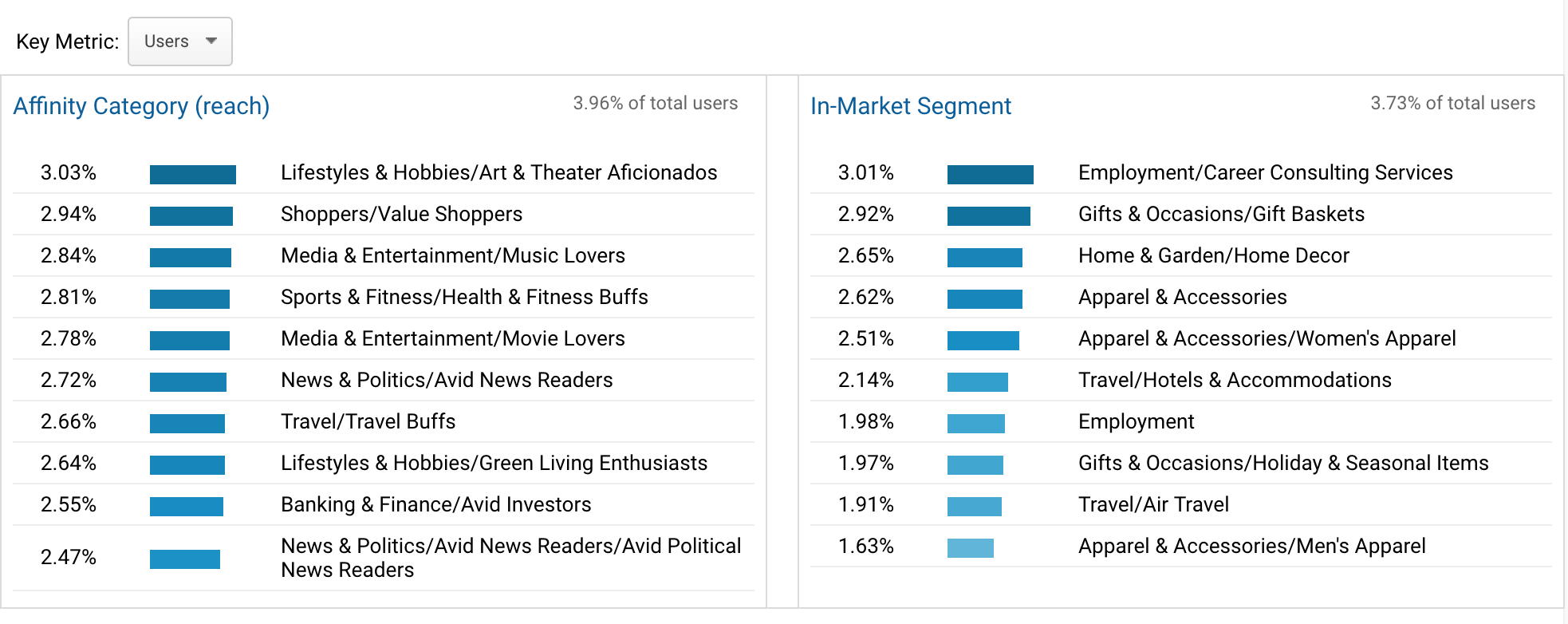Curate Your Audience to Get Better Results from Your Digital Campaigns

Knowing your audience is an important part of your marketing strategy. You need to know and understand who you need to target to reach your goals and objectives. Effectively targeting your potential users can lead to decreased costs through personalized content and messaging, user segmentation, and better-qualified leads. Of course, the first step is to find who to target and get those users to use your product. Below are a series of steps to help you out.
Understand the Product/Service
To understand your audience, it’s important to know the product or service you are promoting. I usually perform the following to gain an understanding of the product, the value proposition, and the audience.
Start with the website and the client
This is obvious, but most of the information you’ll need should be on the website, and your client should be looked as a fountain of knowledge. They are the experts in their industry and their brand and product teams should have accumulated extremely useful customer persona information.
Perform a Google Search
Here is where you start to put yourself in the shoes of your target user and go through the steps of the basic Marketing Funnel. By conducting a simple Google search, you can learn so much about competitors and their unique selling point, organic rankings, and top of funnel keywords. Did an ad for your product show up during your Google search? No? Then you’re missing out on potential top of funnel keywords.
Check out all the social media
Everyone and their cat has a social media page, and this goes the same for established businesses. Check out their social media presence, what type of images are they posting, who tends to be their promotors or detractors? Pages are usually tailored to who they know or believe to know their audience is.
Audience Segmentation
Now that you have a basic understanding of the product you are trying to promote; you’ll need to know the different type of criteria you can use to segment your audiences. I tend to break these out into three sections, demographics, behavioral and psychological
Demographics
This is your basic audience information: gender, age, education, location, etc. Most marketing platforms already easily provide this information for your established campaigns. While this may be the most basic audience segmentation, it can help you personalize your message to appeal to your audience potentially increasing conversions and lowering costs.
Behavioral
Here you dig deeper to understand how they use your client’s website, which day of the week and hour of the day they prefer to visit the site and, most importantly, take the desired action. How many pages did they visit before making a purchase? How long does it take for your audience to make another purchase? What days of the week or hour of the day do you see increased action? These answers can help you decide how big to extend your remarketing window as well as apply ad scheduling bid modifiers to enhance your campaign performance.
Psychological
You continue to get deeper into understanding your audience. What are their habits, interests, hobbies and spending habits? You can quickly build interests groups and layer then onto paid search or social campaigns.
Where do I find this information?
Great question. Thankfully there are different tools a digital marketer can use to gain an understanding of their audience. The easiest way is to look at past campaigns performance; many platforms already share basic demographic information.
Google Ads and Google Analytics can provide you with demographics, devices usage, and high-level interests through Affinity and In-Market audiences. Don’t forget to check traffic referrals, this data can tell you where your users are coming from and what type of pages they’re interested in.

Facebook has a lovely audience insights tool that can give you not only demographic but behavioral data based on users who visit your Facebook page. Once you’re able to create audience segments that drive results you can further extend your reach by creating an audience similar to your top segments.

Closing Thoughts
While you may find similarities in audience segments across most marketing platforms, it’s important to realize that one type of message may not work well across these platforms. You need to also be fully aware of where in the funnels these segments are targeting and which type of content performs well for each platform. Yet as always you only learn through testing, so it’s important to test your audience findings, optimize and repeat.



